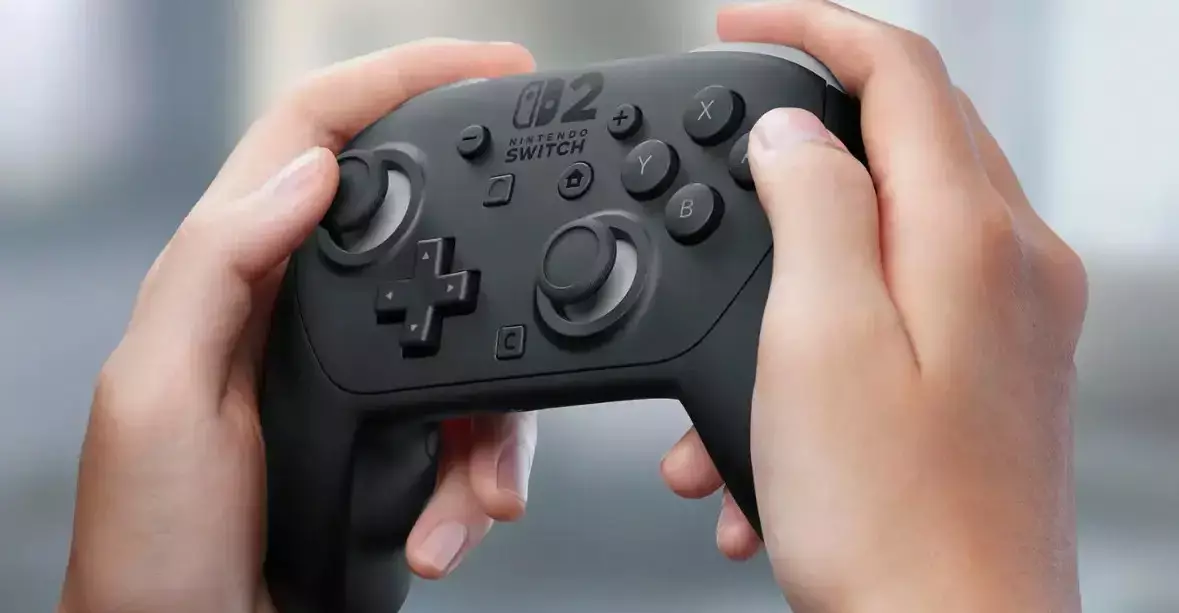In a rapidly evolving gaming landscape, the announcement of the Nintendo Switch 2 has created a buzz reminiscent of the good old days when console wars defined the gaming industry. June 5th marks the launch date when Nintendo will not only unveil its revamped gaming console but also a suite of accessories tailored to enhance the overall gaming experience. It’s no secret that the gaming hardware market has significantly transformed over the years, but with emerging technologies and consumer demands, understanding the implications of this hardware evolution is crucial for both gamers and investors alike.
Accessories: More Than Just Add-Ons
Accompanying the Switch 2 are a variety of accessories designed to elevate and simplify gameplay. Fans eagerly await preorders which include an improved Pro Controller, vibrant carrying cases, and even a camera that allows video chats with friends. These products are more than mere add-ons; they represent Nintendo’s strengthening ecosystem, hoping to lock consumers into a comprehensive gaming experience that’s exciting, social, and, above all, portable.
However, it is equally vital to acknowledge the economic implications behind these additions. President Trump’s fluctuating tariff policies have resulted in increased prices for many gaming accessories, including the coveted Joy-Con controllers. The uncertainty surrounding potential future price hikes should serve as a stark warning to consumers: now is the time to act if you desire a complete Switch 2 package, accessories included.
Packaged Innovations: The Joy-Con Experience
The newly designed Joy-Con controllers are pivotal to the Switch 2’s offering. Unlike their predecessors, the Joy-Con 2 controllers feature a magnetic attachment system that offers a sleek, minimalist design while still being functional. These controllers include a new “C” button, facilitating access to the anticipated GamesChat system, available free until March 31, 2026. While Nintendo has opted out of Hall effect joysticks, the redesign promises a smoother control experience, catering to both casual players and more dedicated gamers.
In conversation, these enhancements, particularly the optical sensors allowing Joy-Con 2 use similar to a mouse in compatible games, are impressive but may clash with consumer expectations. Gamers are likely to expect professional-grade precision and performance, and while Nintendo’s offerings are certainly advancements, they are not without room for improvement.
The Pro Controller: A Game-Changer
For those who prefer gaming on the big screen, the Nintendo Switch 2 Pro Controller is a game-changer. This upgraded version includes retro-modifiable buttons, a 3.5mm audio jack for a headset, and the ever-important “C” button. Retailing around $84, it’s positioned as a versatile controller that promises to satisfy both casual and competitive gamers. Still, gamers can’t help but wonder if the inclusion of extra buttons and a better design justifies the price tag, especially considering alternatives available on the market.
Competing developers often provide more affordable controllers with high-quality performance. It’s essential to view Nintendo’s efforts through a critical lens: will these innovations resonate with budget-conscious consumers? Or do they risk alienating a segment of their dedicated audience?
The Versatility of Charging Solutions
Charging grips are another tactical addition to the Switch 2 experience, optimizing the Joy-Con for wire-free play while allowing them to charge via USB-C. At roughly $39.88, this accessory stands as a symbol of Nintendo’s commitment to user-friendly design. While they mimic functionalities from the original Switch, introducing customizable buttons demonstrates an adaptive approach—an acknowledgment of a gamer’s need for personalization.
Moreover, the gaming community is a voracious crowd; the demand for accessories could lead to other manufacturers stepping into the arena, introducing their innovative solutions that challenge Nintendo’s offerings. For Nintendo, quality and functionality must be balanced against the risk of losing market share to third-party developers.
A Comprehensive Gaming Ecosystem
Beyond gameplay controls, Nintendo’s new camera facilitates an interactive dimension, allowing players to video chat while gaming—a nod to a more connected experience that reflects the needs of a contemporary audience. The camera, retailing at around $54, is cleverly designed for groups, incorporating various modes that play into the dynamism of multiplayer scenarios. This addition has enormous potential to resonate with a gaming culture that thrives on social interaction.
Nonetheless, the value of these accessories ultimately hinges on their execution. Are Nintendo’s products truly enhancing the gaming experience, or are they merely riding the wave of consumer interest? As gaming technology continues to evolve, the balance between innovation, functionality, and affordability will be crucial for the future of platforms like the Switch 2.
Overall, as we stand on the cusp of the Switch 2’s launch, the promise of a comprehensive gaming ecosystem is palpable. Yet, with great advancements come inherent risks—accounting for market stability, pricing strategies, and, ultimately, consumer satisfaction remains a crucial task for Nintendo.

